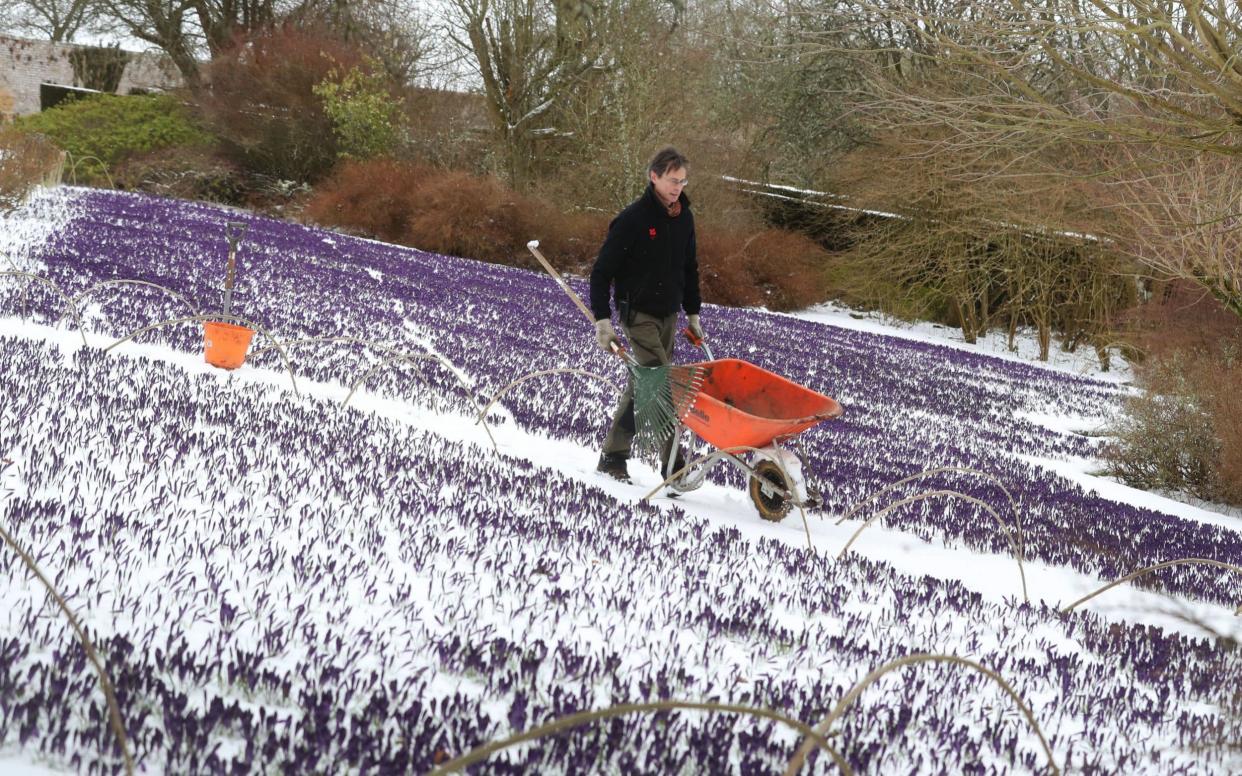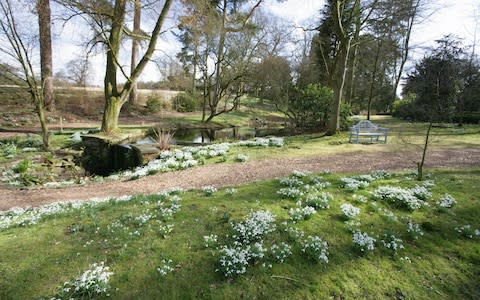12 top tips to get your garden back on track after the Beast

The snow drifts and rime-covered branches of the Beast from the East had barely melted when the mini-beast (aka the ‘Wrong-un from Russia’) blew icily in on its heels.
For my postman the snow was a boon: ‘Finally my garden looks as good as the neighbour’s!’ but for me, living in the usually balmy climes of South Devon, it came as a surprise. I had taken all the Met Office warnings with a pinch of the stuff they spread on the roads. Why wouldn’t I when in the last two decades we’ve had more solar eclipses than inches of snow?
So, I and many others like me, were badly caught out with taps left unlagged, the pump still in the pond and evergreens battered and splayed by a foot of snow – and not once but twice in two weeks.
Still, it could have been so much worse. According to Royal Horticultural Society (RHS) Chief Horticultural Advisor Guy Barter: ‘The cold came at a good time as hardy plants like daffodils soon bounce back and trees, provided they’re in bud, retain their hardiness. Even magnolias and pears which open early and are notoriously vulnerable are safe in bud and will hold until temperatures rise for a surprisingly long time.’

The fluffy quality of the snow also helped, piling onto pots and protecting plants from the icy winds. Former BBC weatherman and chairman of Radio 4’s Gardeners’ Question Time Peter Gibbs, who gardens in Maidenhead, says: ‘Snow is a really good insulator and most plants here seemed to have come through unscathed, although I’ll have to wait and see whether my Mediterranean fan palm sprouts over the coming weeks’.
According to Peter we were lucky. The easterly wind was dry and couldn’t hold much moisture, meaning although the snow was deep it was lightweight which explains why fewer plants than expected splayed under its weight.
The worst damage was to evergreens too big to protect as the constant withering winds ‘freeze dried’ the leaves and robbed them of moisture. My bay trees have turned black while the older leaves on my pride and joy evergreen spurge Euphorbia pasteurii have turned as rosy-red as a snowballing child’s cheeks. This is a prequel to them falling and I’ve seen it before. Chlorophyll requires a lot of energy for plants to make so in times of seasonal stress it’s drawn back into the branches exposing the red pigment (anthocyanins) below.
Normally when I catch up with Christine Walkden her garden on the Hertfordshire/Essex border is always colder than mine but this year the meteorological natural order has reversed to give the West the sort of weather we normally only see on the News at Ten. Christine says, ‘Apart from being slow, I have seen no damage in the garden as we did not have much snow. Things are now moving but I rather consider it a normal spring. I think we forget the past few years spring has come early.’
This echoes Guy Barter’s observation that the snow has chilled the soil, putting spring on hold. ‘It was looking like being an early season but now it looks like it’s going to be late,’ he says.
So, it seems the Beast’s bark was worse than his bite. But before you put away the sledge, the Met Office’s long-range forecast shows a greater than usual chance of cold spells into April.
‘Snow is more common at Easter than Christmas,’ says Peter. It might still be worth lagging those taps.
Cold consequences
Very cold temperatures cause water inside plant cells to freeze. As the water expands cell walls are damaged and leaves look bruised and distorted. When soil freezes, roots are unable to take up water and plants die of drought.
Check plants for life by gently scraping away the bark from ‘Beast-ravaged’ plants. If there’s green sap underneath they’re alive but if they’re brown the cold has killed them.
Don’t rush to dig up plants that have jettisoned their leaves. Scorched evergreens, like bay, will bounce back by June/July while tender woody types such as Salvia ‘Hotlips’, Melianthus major and Tetrapanax ‘Rex’ often re-sprout from the base. When this happens, cut away frosted growth to a healthy new bud to prevent further dieback.
Branches splayed by the snow won’t regain their shape without help. Use soft twine to tie them back in place or, for larger shrubs, use bungee cords. These can be removed in summer when the wayward limbs have set back into position.
Cordylines, palms, yuccas and echium growing in the soil will recover if their trunks stay solid and the growing point intact. Trim any leaves that are bent or blackened to make way for the new. If the stems become spongy all but the echium can, fingers crossed, re-grow from the base.
Keep potted Mediterranean plants dry, such as French lavender, sage and rosemary, to prevent fungal infections caused by the cold spreading to their centres. If short of greenhouse space, position pots in the rain-shadow of a house wall. When new growth comes water more generously.
If small plants have caught a cold, trowel them out of the ground, pot up and keep in the greenhouse/cold-frame. They’ll recover more quickly if out of the damp soil.
Early sowings and newly planted seed potatoes may have survived beneath the protective quilt of powdery snow… but the cool weather means they won’t be much earlier than replacements planted now.
Protracted frosts kill pests but the jury is out as to whether we’ve had enough cold to curb their numbers. Keep an eye on your daffodils and if you spot nibbled petals slugs have made it through and vulnerable plant will need protection.
A slow start means that spring, when it does arrive, will come in an explosion of colour as delayed early blooms will coincide with flowers of late spring.
Feed bashed evergreen hedges with a balanced fertilizer - one with equal amounts of Nitrogen, Phosphorus and Potassium such as fish, blood and bone – to boost recovery.
A late spring means it pays to wait before sowing. Victorian gardeners would check that conditions were warm enough by sitting their bare derriere on their veg beds. If the earth was comfortable for a bottom it would be for a beetroot. You could preserve your modesty and wait for the first flush of annual weeds. When they appear, seeds will be fine to sow.
Celebrate Five Years of Toby’s Garden Festival, Friday 27 & Saturday 28 April 2018. Speakers include Toby Buckland, Rachel de Thame, Terry Walton and Jim Buttress. Advance tickets now available (tobygardenfest.co.uk).


